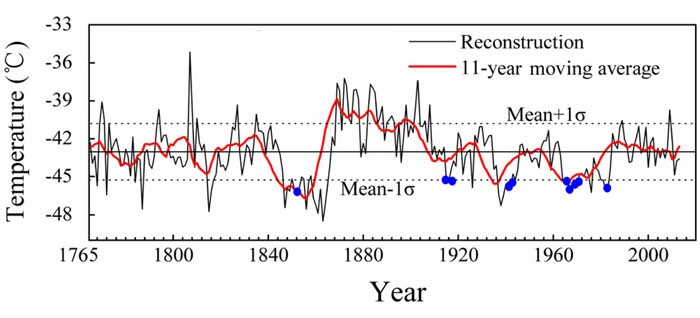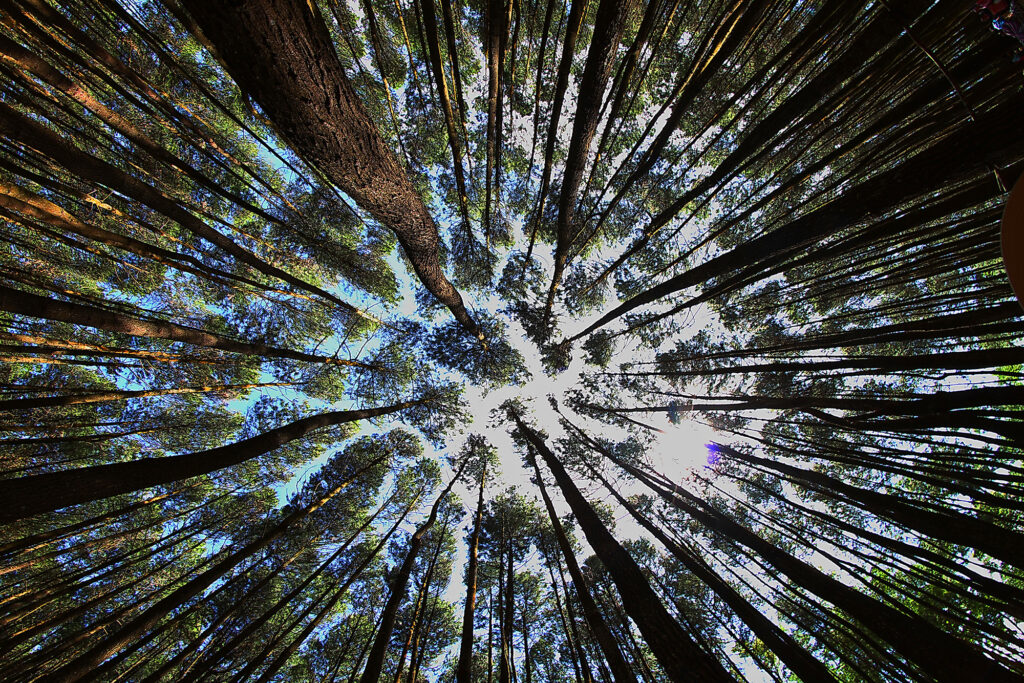From CO2Science: A large fraction of tree-ring-based temperature reconstructions are based on warmer months of the year. Relatively few are those that reconstruct winter season temperatures, especially in colder regions of the planet. Consequently, in the words of Jiang et al. (2020), “it is therefore necessary to develop temperature reconstructions for the winter season where rising temperatures may be an effect of global warming,” especially so since much of the CO2-induced warming predicted by the models is expected to occur in the winter season and at higher latitudes. Historic analyses of winter temperature provide an excellent baseline of natural climate variability, which can then be used in validating model projections of current and ongoing climate change from rising atmospheric CO2.
Paper reviewed: Jiang, Y., Liu, C., Zhang, J., Han, S., Coombs, C.E.O., Wang, X., Wang, J., Hao, L. and Dong, S. 2020. Tree ring width-based January-March mean minimum temperature reconstruction from Larix gmelinii in the Greater Khingan Mountains, China since AD 1765. International Journal of Climatology, DOI: 10.1002/joc.6733.
Jiang et al.’s contribution to this topic was the creation of a tree ring width-based reconstruction of winter (January through March) mean minimum temperatures in the Greater Khingan Mountains of northern China. The proxy record was derived from 60 increment cores taken from 33 trees of Larix gmelinii stands with minimal human disturbance. The cores were processed according to standard dendrochronological procedures and correlated well with Jan-Mar mean minimum temperatures during the instrumental period. The resultant proxy led to a 249-year temperature series covering the period 1765-2013 and which is presented in the figure below.
As noted in Figure 1, the record displays substantial variability on multiple time scales where temperatures were both warmer and colder than present. Perhaps the two most notable features of the record are (1) the exceptional cold period between 1845 and 1858 (the coldest in the record) when temperatures were consistently at or below one standard deviation from the mean for 14 years and (2) the remarkable 21-year warm period that followed thereafter between 1865 and 1885, much of which time experienced temperatures one standard deviation above the mean.
Another significant observation is the lack of any significant or unprecedented warming during the modern era. In fact, temperatures have trended downward since the 1865-1885 warming peak, only recently making a slight recovery in the 1980s that was followed by a slight decline in temperatures to the present. Today, temperatures remain approximately 4 °C below the peak warmth of the late 1800s.
Jiang also conducted spectral analyses on the data set, finding significant cycles at 2-7, 14.7-15.6, 31.4, 41.8, 62.7 and 125.5 years, which cycles were found to correlate well with ENSO (2-7 years), sunspot activity (14.7-15.6 years), the Pacific Decadal Oscillation (31.4 years), the North Atlantic Oscillation (41.8 and 62.7 years). These significant correlations of well-known climate indices, in the words of the authors, “suggested the effects of large-scale ocean-atmospheric variability on regional temperatures in the study area.” And we would add, the absence of any significant rise in temperature since 1940 suggests rising atmospheric CO2 has had no measurable impact on winter temperatures in this region.

Figure 1. January through March mean minimum temperature reconstruction for the Greater Khingan Mountains, China, over the period 1765 to 2013. The smoothed line presents an 11-year moving average and the blue dots represent cold years that were recorded in historical archives. Source: Jiang et al. (2020).



Give it a year or two, this graphic too will turn up with a hockey stick superimposed on it.